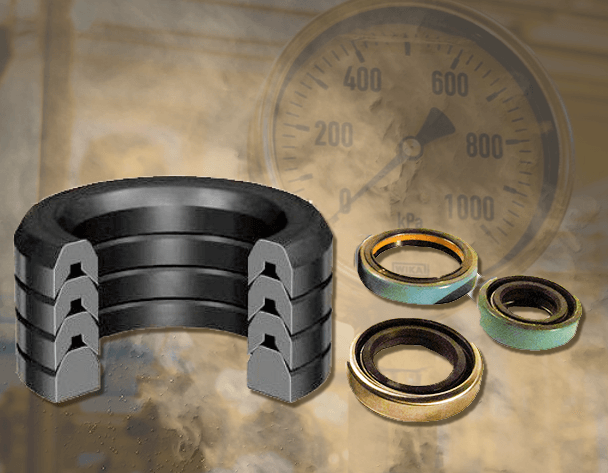Whether its a labyrinth seal used in a compressor or a spring-energized seal used in a cryogenic application, seal performance is critical. Premature failure of seals is simply not acceptable, but there are ways to prevent these problems. In this blog post, we are going to discuss material selection, wear sleeves, lubrication, and optimized seal design as options for improving the performance of your seals.
Material Selection
If your seals are failing prematurely, it may be time to go back to the drawing board to verify that youve selected a proper seal material. Here are some often overlooked considerations you may want to review with regard to material selection:
- Operating temperatures, including peak operating temperature and temperature fluctuations (or thermal cycling) that might impact performance
- Pressure fluctuations that can impact seal performance
- Exposure to harsh chemicals or conditions during sanitation procedures
- Compatibility between media and the seal material
- Exposure to UV or ozone, which can cause premature degradation of some polymeric materials
- Not just PV value, but maximum P and maximum V because a material might match up with a PV value but not with the P or V when considered separately
- Surface hardness and finish/roughness of the shaft contact surface for dynamic seals
Utilizing a Wear Sleeve
Dynamic shaft seals can experience excessive wear when there are imperfections in the shaft surface. It isnt always feasible to pull the shaft and recondition the surface finish. It can also be too expensive to replace the entire shaft when its only a small section that is causing problems. Another option might be to customize a seal to work with the shaft, but that can be just as problematic. A wear sleeve is an alternative solution that can either cover up shaft imperfections or protect the shaft itself from wear. There is no need to replace or resurface the shaft, they are easy to install, and they can significantly extend the life of seals.
Lubrication
Some seal materials, such as PTFE, UHMW or special PEEK compounds, are self-lubricating and require no additional lubrication. However, there are some applications where lubrication is needed. Lubrication is most often required to reduce friction or conduct heat away from critical components. Sometimes you can improve seal performance by using a lubricant. This could include application of a lubricant or using a seal material with additives that reduce friction and result in self-lubrication. It is also essential to keep in mind that not all lubricants and seal materials are compatible.
Optimized Seal Design
Sometimes seal performance can be significantly improved through the use of optimized design. These are just a few seal design characteristics that can be optimized:
- Lip geometry and cross-section
- Clearances
- Spring energizers
- Labyrinths
- Seal material additives
- Back up rings
- Wipers
- Seal lip contact shape
Keep in mind that off-the-shelf seal solutions may not work for your application. Custom optimized seal designs may be just the thing to save you both time and money when it comes to premature seal failure.
Conclusion
If you are having seal performance issues, dont forget that you can potentially improve the situation through careful material selection, utilizing a wear sleeve, looking into options for lubrication, or through optimized seal design.
You may also enjoy these articles:
- Factors Influencing Rotary Shaft Seal Performance: Pressure, Velocity, and Temperature
- PTFE Shaft Seals: Meeting the Challenges of High Speed Applications
{{cta(‘9a9e0d7f-9c4a-4c6c-bb1f-45cec7605a51′,’justifycenter’)}}

